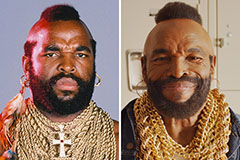Crafting impactful banner ads is essential for online success. To boost your click-through rates and capture audience attention, consider these tested design strategies. First, utilize high-quality visuals that are pertinent to your target audience. Incorporate eye-popping colors and succinct messaging that transmits your value proposition instantly. , Furthermore, optimize your banner ads for diverse screen sizes to ensure perfect viewing experience across devices. Lastly, run A/B testing to discover the most effective designs and persistently refine your strategy for outstanding results.
Increase Click-Through Rates with Engaging Banners
Captivating banners are a key ingredient for enticing users to tap with your offers. To truly make a difference, consider these tips for crafting banners that scream "click me!":
* Display eye-catching images that captivate attention.
* Keep your text concise and compelling.
* Use striking colors that contrast with your brand.
* A/B test different banner variations to see what converts best.
Remember, a great banner is more than just a pretty image; it's a call to action that inspires users to take the next step.
The Essentials of Effective Banner Ads
Crafting a successful banner ad requires more than just catchy visuals. It demands a strategic understanding of the key elements that capture attention and drive conversions. To achieve this, your banner ads should include powerful headlines that immediately grab users' interest. Pair these with concise and clear calls to action that encourage clicks.
A strong visual hierarchy is also crucial, guiding the viewer's eye toward the most important information. Remember to optimize your ad size and placement for maximum visibility on different platforms. Finally, don't forget to experiment with Online Banner Ad various elements to discover what resonates best with your target audience.
Maximize Your Reach with Effective Banner Placement
When it comes to displaying banners on your website, the placement is key in maximizing their impact. A well-positioned banner can attract attention and drive traffic, while a poorly placed one will go unnoticed.
Consider these elements when deciding on the ideal banner placement:
* User interaction
* Banner message alignment
* Design aesthetics
Remember, A/B testing is your best friend when it comes to finding the perfect spot for your banners.
By adjusting your banner placement intelligently, you can boost your reach and achieve your marketing objectives.
Banner Ads: Finding the Right Format for Your Campaign
When crafting a successful online advertising initiative, selecting the optimal banner ad format is crucial. Banner ads come in a variety of shapes and sizes, each with its unique features. Understanding these different formats empowers you to choose the best approach for your specific marketing goals.
- Graphical Banners: These are the classic rectangular banners that adorn websites. They can be static or animated, and offer a wide range of creative options.
- Top Banner Ads: These long, narrow banners sit at the top of web pages, capturing viewer attention as they navigate.
- Square Banners: These ads strike a balance between visibility and space usage. They work well for showcasing product photos.
To maximize your results, consider your target market and the specific message you want to convey. Experiment with different banner ad formats and analyze their success to refine your advertising strategy over time.
The Evolution of Banner Ads: From Static to Interactive
From humble beginnings as unmoving rectangles, banner ads have undergone a remarkable evolution. What was once a simple display of text and visuals has now evolved a dynamic and interactive tool.
Early banner ads were largely static, relying on eye-catching designs to grab attention. As technology advanced, the landscape changed. Advertisers began to implement interactive elements like videos, providing a more engaging experience for users.
The shift towards interactivity
- has led to
- greater user participation
Ultimately, this evolution is to foster a more effective and valuable advertising experience for both users and advertisers.
 Mr. T Then & Now!
Mr. T Then & Now! Anna Chlumsky Then & Now!
Anna Chlumsky Then & Now! Marla Sokoloff Then & Now!
Marla Sokoloff Then & Now! Earvin Johnson III Then & Now!
Earvin Johnson III Then & Now! Richard Dean Anderson Then & Now!
Richard Dean Anderson Then & Now!